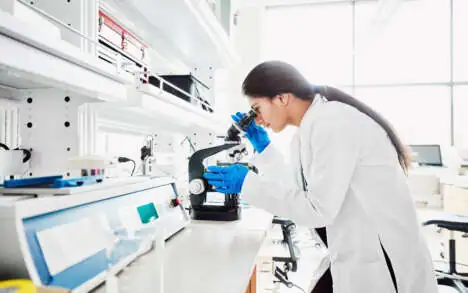With the EU GMP Annex 1 “Manufacture of Sterile Medicinal Products” [1] coming into effect as of August 2023, the PDA Annex 1 Workshop event in Antwerp was well-timed. Companies are now being inspected against the guidelines and receive observations in cases of non-compliance.
Although the revision seeks to remove ambiguity and inconsistencies, there are still open-ended questions and challenges for both industry and regulators. The workshop provided an excellent opportunity for industry and regulators to review and discuss their interpretations, associated challenges, and possible solutions for compliant implementation of the now in-force Annex 1.
Participants had the opportunity to ask a panel of experts and regulators about topics related to the revision and actively engage with peers during the various round-table discussions.
Initial discussions centered on how to interpret some of the text of Annex 1, not only by the industry but also by regulators, since there have been challenges with how regulators have interpreted the Annex 1 text during inspections. For many, correct application of the principles of Quality Risk Management (QRM) and use of the right tools is still proving to be difficult. Discussion points raised included:
- Linking QRM with the expected contamination control strategies and keeping the documents alive
- Environmental monitoring
- Personnel monitoring programs including qualifications
- Challenges with PUPSIT (pre-use post sterilization integrity testing)
- Container closure integrity testing expectations
These five key takeaways from the event are explored below.
Contamination Control Strategy and Quality Risk Management
Quality Risk Management (QRM) and the development of a Contamination Control Strategy (CCS) are almost synonymous. The CCS definition in Annex 1 aligns closely with the process control strategy of ICH guideline Q10 on pharmaceutical quality system [3]. The key is that those involved require a good practical understanding of QRM to create a successful CCS.
While a Failure Mode and Effect Analysis (FMEA) is mostly used, companies need to think beyond this tool. For example, the use of Hazard Analysis and Critical Control Point (HACCP) can be a very effective tool for the design of a monitoring program, and data from these programs can provide direct feedback on the effectiveness of the CCS. Risk assessments are required for each process and site as every process is unique, even within the same company. With any risk assessment it is crucial to prevent bias by setting clear definitions and descriptions with pre-agreed criteria.
Many examples of a CCS template and guidance for development of a CCS have been made available since the first Draft of the new 2023 Annex 1 was published in December 2017. One example is the PDA’s own Technical Report no. 90 “Contamination Control Strategy Development in Pharmaceutical Manufacturing” [2]. The CCS should describe the controls in place to prevent product contamination and why these controls are there; however, it should not replicate the information to which it is referring.
Having the individual building blocks for a CCS does not necessarily make it an effective strategy. It is imperative to assess how the different controls collaborate, interact, and augment each other to assure product quality and patient safety. Knowledge and data are key to ensuring that the scientific rationale and justification is captured for the design, control and operation of the process and facility.
When creating a CCS, a company might discover sub-optimal controls that require remediation to make a process more robust. When creating a CCS it might Creating a robust CCS can help to address such issues and ensure continuous improvement, which is what Annex 1 strives to achieve.
CCS governance and maintaining it as a living document is another priority. Who is responsible for maintaining the strategy, and does it warrant a review or revision?
The CCS covers many areas so many different functions need to be involved to ensure the correct information is captured. Once established, the CCS should be used in a pro-active manner as part of a company’s wider change control processes in the same way that new products or proposed changes to utilities or the facility would be managed. CCS should be incorporated into periodic management meetings to create an understanding of potential risks and get buy-in for the time and budget needed to implement remediation actions. All issues related to ownership and governance should be clearly established within each organization to ensure the successful implementation and ongoing maintenance of the CCS.
Environmental Monitoring
A well-designed monitoring program can generate data that provides direct feedback on the effectiveness of the CCS. Annex 1 clearly spells out that risk assessments should be performed to establish comprehensive environmental monitoring. While this requirement was already described in the 2009 revision, what is new is that risk analysis is now expected to be more comprehensive. Risk assessments should address the frequency, locations and type of monitoring performed, based on the activities performed and proximity and risk to the critical zones. The use of data from air visualization studies can be a valuable source of information to determine the impact of activities and the requirement for monitoring at specific locations.
An additional consideration is the incubation conditions. Should the company consider staggered incubation at two different temperatures? Would use of different media enhance isolation of a particular type of micro-organism of interest, for example molds? Is incubation at anaerobic conditions required? For example, periodic anaerobic monitoring could be considered to determine if aerobe-tolerant anaerobe micro-organisms like Propionibacterium acnes are an issue. This human skin-related bacterium could cause product contamination issues that would not be detected when using aerobic incubated Trypticase Soy Agar (TSA) media plates. All such issues must be justified in the company’s risk assessment.
During the workshop, it was noted that
As with any use of equipment in a GMP environment, quantitative air samplers for viable and total particulates require calibration. There is much debate about the requirement for particle counters to be qualified, including sample tubing. The question ‘how to qualify’ was raised but was not easy to answer. International Standards ISO-17025:2017 “General requirements for the Competence of Testing and Calibration Laboratories” [4] and ISO-21501-4:2018 “Determination of Particle Size Distribution Single Particle Light Interaction Methods – Light Scattering Airborne Particle Counter for Clean Spaces” [5] provide some guidance but the experience is that there are different approaches and specialized contract laboratories also struggle to understand how to perform qualification testing. Another standard providing valuable information is ISO-14644-21:2023 “Cleanrooms and Associated Controlled Environments – Airborne Particle Sampling Techniques” [6].
Individual sample results give an indication of the cleanroom performance at the specific sample time, however individual data don’t give any indication if the cleanroom can maintain microbial and particulate levels in a controlled state over a prolonged period. Hence, monitoring programs are expected to have procedures in place to detect adverse trends, with alert and action levels to address these. In any situation where an excursion or adverse trend is reported, root cause analysis and product impact assessments are to be completed with corrective and preventive actions taken where required.
Personnel Monitoring & Qualification
Like environmental monitoring programs for cleanrooms, the personnel monitoring program is also expected to be based on risk analysis where sample locations, sample frequency and methodology are expected to be justified. Consideration must be given to when sampling should take place, and, at a minimum, glove and gown samples should be taken from all personnel when exiting a Grade B cleanroom.
Personnel monitoring after critical interventions should be based on the process design and activities performed. Manual operations could warrant a higher frequency of monitoring depending on the process and environment where they occur. Typically, gloves are sampled after completion of critical interventions, and personnel gowns may also need to be monitored in some situations, such as the sleeves of an operator who is required to reach into the critical zone. Regardless of the frequency, it is expected that when outer gloves are sampled, they are replaced and that the sampled gown is replaced before further activities commence in the cleanroom. Personnel monitoring should be subject to auditing to assess if the sampling process is followed correctly and consistently.
Apart from on-the-job training, sampling of personnel is an important aspect of the personnel qualification and requalification process and demonstrates that a person is compliant with the aseptic gowning procedure. In addition, personnel monitoring can be used as a (re)qualification tool to confirm that no contamination occurred on the person’s gowns while performing activities in the cleanroom over a prolonged period.
At a minimum, a person must be reassessed annually, and procedures must clearly describe what the cleanroom disqualification, retraining and requalification criteria are. Personnel sampling itself will not give sufficient assurance of an operator’s ability to gown and behave correctly in the cleanroom. Observation and visual assessments are equally important and must be recorded as part of the initial qualification and periodic requalification process.
In addition, the use of air visualization studies can be a useful tool for demonstrating the impact an individual has on the critical environment . It was shared during the workshop that . It was explained that
One challenge is allowing sufficient time and resources for adequate operator training and qualification, in particular when new personnel do not have the full knowledge and experience of working in an aseptic manufacturing environment.
Pre-Use Post Sterilization Integrity Testing (PUPSIT)
, it was mentioned in the workshop that the principles were embraced by the US regulatory body. PUPSIT is now the norm in the EU and in other countries that have endorsed Annex 1 and PIC/S PE 009-17 “Guide to Good Manufacturing Practices for Medicinal Products Annexes” [7].
PUPSIT addresses potential product sterility issues because of damage during shipment, storage and assembling of filters. For example, a flawed filter may not be detected during the post-use filter integrity test alone because of masking or clogging of the filter – a situation that has been demonstrated in a collaborative study with BioPhorum and the PDA [8]. PUPSIT therefore makes good business sense as it can prevent the unnecessary rejection of costly medicinal products and prevent out-of-stock situations that could impact patients if a post-use test fails.
There might be situations where PUPSIT can be omitted, such as products manufactured in small volumes. But the question is, what is the definition of small volume and what would be acceptable? If a company decides not to apply PUPSIT it must be accompanied with a rigorous and scientifically justified risk assessment with supporting data. Defining a rationale for not performing PUPSIT in a final sterile filtration process will be very difficult. As a former regulator rightfully commented: “The question should not be how can we avoid PUPSIT, but rather there should be a mindset of how can we implement PUPSIT?”.
While the use of a redundant filter is very common in the pharmaceutical industry, with the introduction of PUPSIT, this is no longer seen as best-practice. On the contrary, companies noted during discussions that testing both filters pre-use post sterilization is a challenge and an additional cost. There is also no need to apply a redundant filter as the integrity of the first filter will be known in advance of the sterile filtration process. When a facility decides to maintain the redundant filtration process, both filters are expected to pass the integrity test.
During discussions, it was agreed that regulators are also gaining more knowledge about PUPSIT and, as such, requesting more information about the process during regulatory inspections.
Container Closure Integrity Testing (CCIT)
As became apparent with the publication of the first draft of the revised Annex 1 in December 2017, requirements and expectations around container closure integrity will increase. With some rewording and tweaking, the final text is now captured in section 8.20 to 8.25. It starts by describing that, regardless of the chosen container closure configuration, final containers are to be closed using validated methods. This appears to be a challenge for manufacturers as it is not always known what data must be generated to demonstrate that a closure method is validated.
From the sections mentioned, it is apparent that Small Volume Parenterals (SVP) with volumes ≤100 ml and Large Volume Parenterals (LVP) with volumes >100 ml filled in flexible bags face the most significant implications. While there is a 100% CCIT requirement for all units closed by fusion and small volume flexible bags, the expectations for LVP flexible bags are that reduced sampling may be acceptable where scientifically justified. However, questions remain as to what is deemed scientifically justified, as no guidance is provided and currently there is no technology available that can manage high volumes of CCIT for large volume flexible bags at a high speed.
Where units are sealed under vacuum, it must be demonstrated that this vacuum is maintained prior to batch release. The same principle could be applied to containers that are sealed with slight under-pressure, for example 800mBar, and where this under-pressure is critical to the product. In these circumstances, maintenance of the pressure should be monitored.
Most companies still use a lifecycle approach to demonstrate container closure integrity for units other than those closed by fusion. The science-based holistic product lifecycle approach uses data from the initial validation, transportation, equipment (capper) set-up and stability testing. Measuring residual seal force can give a good indication of how tight a cap is applied and therefore the sealing of the container. Studies have shown a correlation between seal force and container closure integrity (CCI) as loose capped vials reported a high CCI failure rate[9]. Such data provide a good indication of the CCI of a process.
With technology advancing, companies are moving to in-line / off-line periodic CCIT of vials or syringes at set intervals. There is an expectation that companies move to more deterministic methods as more technologies become available.
Summary
With EudraLex Volume 4 Annex 1 being effective since August 2023, companies still have many questions in relation to the interpretation and implementation of the requirements. Many have progressed through the gap analysis process and are rolling out their remediation activities to close identified gaps. However, regulatory bodies have started giving observations for non-compliances where gaps remain. Examples include gap assessments that did not adequately assess the Annex 1 text, resulting in “unknown” gaps for the organization or where regulators recorded citations for not implementing remediation actions quickly enough. These examples show that companies continue to have challenges implementing the Annex 1 requirements and demonstrate compliance.
Author – Patrick Nieuwenhuizen / Director Principal Consultant at Cencora PharmaLex
References
- EudraLex Volume 4 Good Manufacturing (GMP) Guidelines – Annex 1, Manufacture of Sterile Medicinal products (2022) . Accessed through: https://health.ec.europa.eu/system/files/2022-08/20220825_gmp-an1_en_0.pdf
- PDA Technical Report No. 90 – Contamination Control Strategy Development in Pharmaceutical Manufacturing (2023). Accessed through https://techpubportal.pda.org/publication/?i=782488
- ICH guideline Q10 on pharmaceutical quality system (2007). Accessed through https://www.ema.europa.eu/en/documents/scientific-guideline/international-conference-harmonisation-technical-requirements-registration-pharmaceuticals-human_en.pdf
- ISO-17025:2017 Accessed through https://www.iso.org/ISO-IEC-17025-testing-and-calibration-laboratories.html
- ISO-21501-4:2018 Accessed through https://www.iso.org/standard/58073.html
- ISO-14644-21:2023 Accessed through https://www.iso.org/standard/86513.html
- PIC/S PE 009-17 – Guide to Good Manufacturing Practices for Medicinal Products Annexes. Accessed through https://picscheme.org/docview/6608
- BioPhorum – The Use of Scientific Data to Assess and Control Risks Associated with Sterilizing Filtration: A PDA and BioPhorum Collaboration (2020). Accessed through https://www.biophorum.com/download/sfqrm-the-use-of-scientific-data-to-assess-and-control-risks-associated-with-sterilizing-filtration-a-pda-and-biophorum-collaboration/
- Quantifying the Vial Capping Process: Residual Seal Force and Container Closure Integrity (2019). Accessed through: https://pubmed.ncbi.nlm.nih.gov/29954924/








